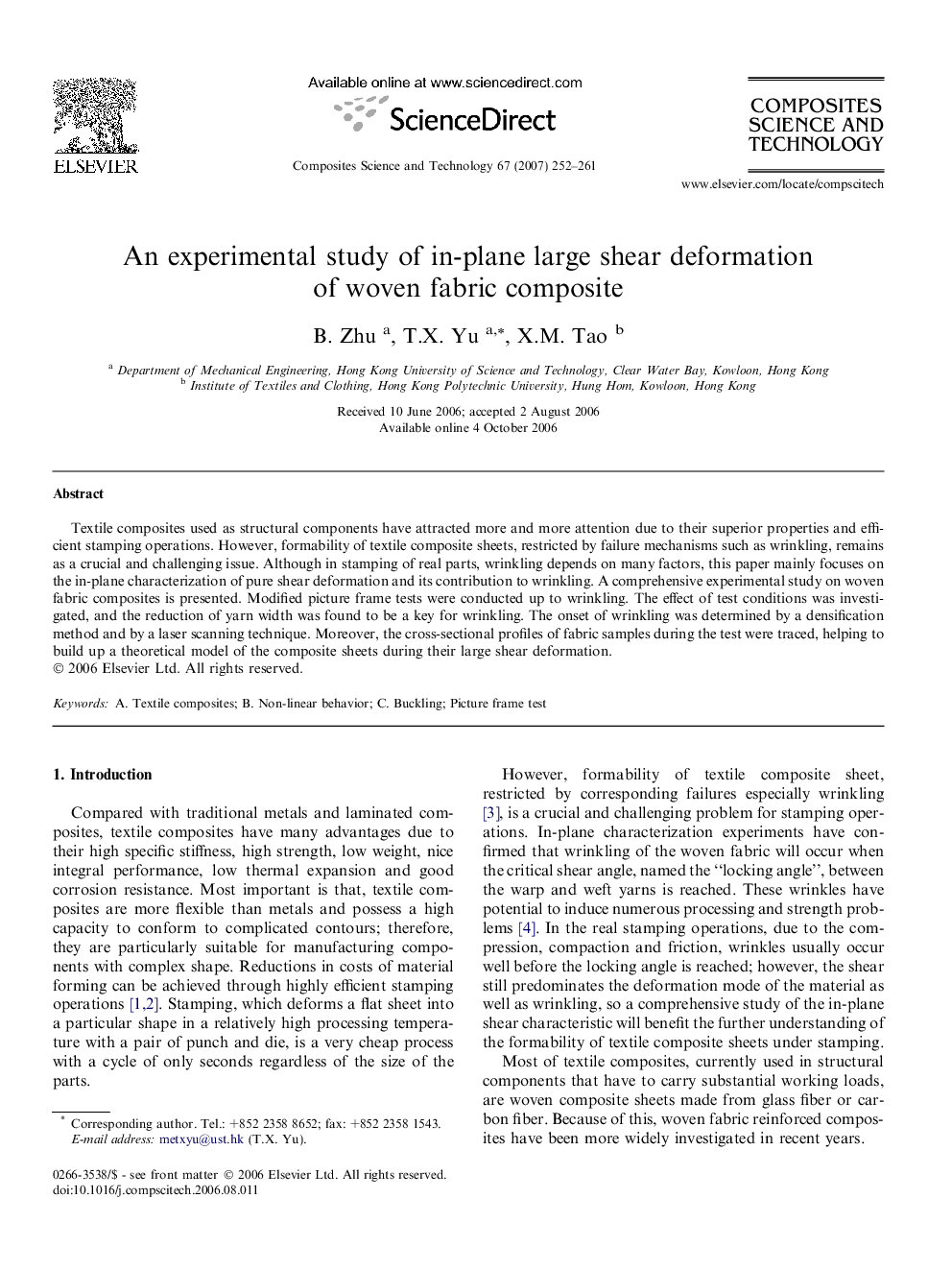| Article ID | Journal | Published Year | Pages | File Type |
|---|---|---|---|---|
| 822745 | Composites Science and Technology | 2007 | 10 Pages |
Textile composites used as structural components have attracted more and more attention due to their superior properties and efficient stamping operations. However, formability of textile composite sheets, restricted by failure mechanisms such as wrinkling, remains as a crucial and challenging issue. Although in stamping of real parts, wrinkling depends on many factors, this paper mainly focuses on the in-plane characterization of pure shear deformation and its contribution to wrinkling. A comprehensive experimental study on woven fabric composites is presented. Modified picture frame tests were conducted up to wrinkling. The effect of test conditions was investigated, and the reduction of yarn width was found to be a key for wrinkling. The onset of wrinkling was determined by a densification method and by a laser scanning technique. Moreover, the cross-sectional profiles of fabric samples during the test were traced, helping to build up a theoretical model of the composite sheets during their large shear deformation.
